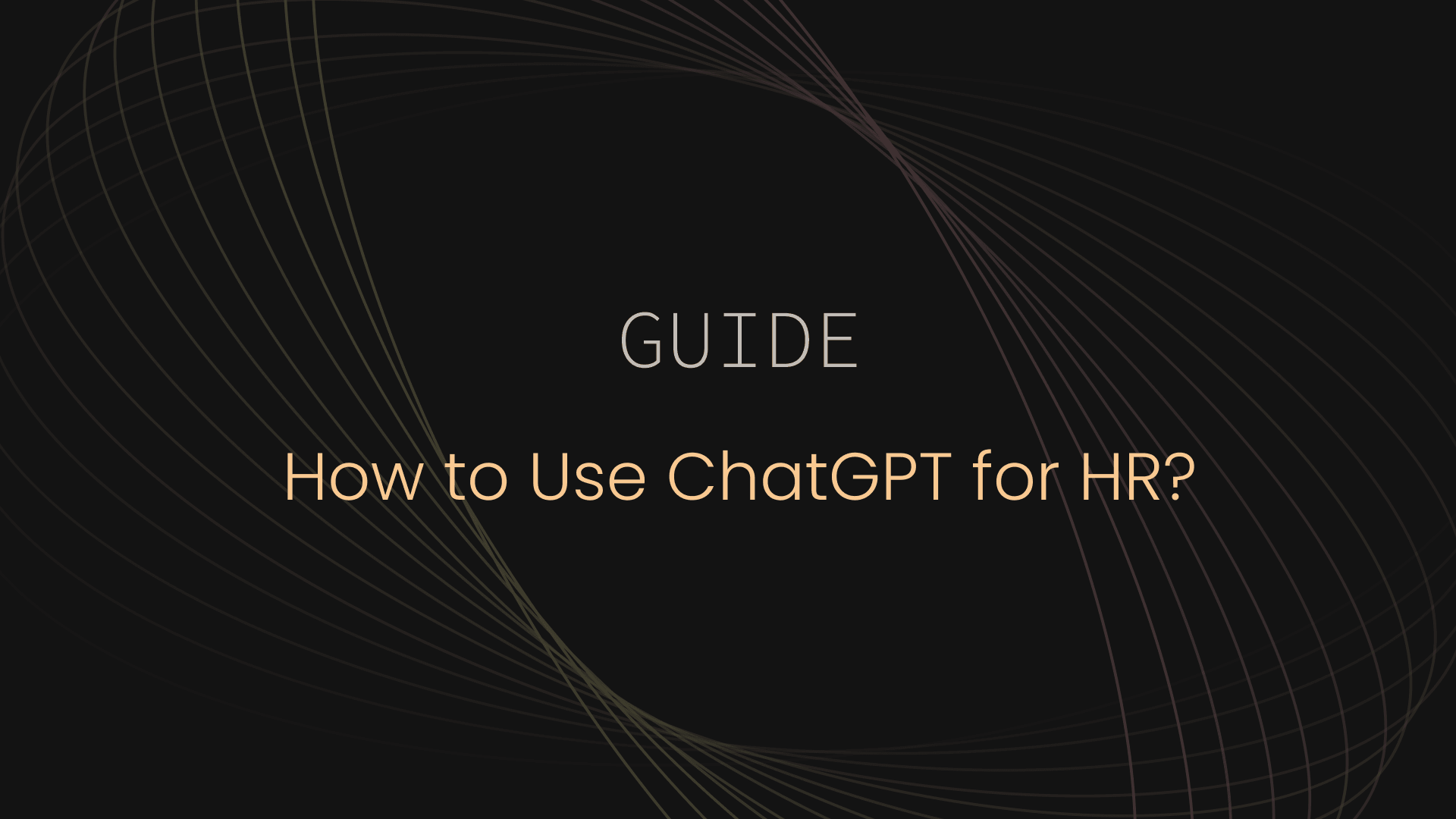Insights
10.10.2025
Miikka Kataja
How to Use ChatGPT for HR
A practical guide to automating workflows, improving communication, and enabling better decision-making with generative AI

Using ChatGPT for HR means applying generative AI to automate repetitive tasks, enhance communication, and support decision-making across the employee lifecycle—from recruiting and onboarding to performance and learning. When used well, it helps HR teams save time, improve consistency, and make employee experiences more personal and data-informed.
According to a 2024 Gartner survey, 76% of HR leaders are already experimenting with generative AI to improve efficiency and employee experience—making this one of the fastest-growing areas of AI adoption today.
In this article, we’ll explore how to use ChatGPT effectively in HR, practical examples for each process, and how to build safe and scalable AI practices for your team.
Why use ChatGPT for HR?
HR teams manage communication-heavy, data-driven processes every day. ChatGPT can help by:
- Automating document creation (job descriptions, feedback forms, and policies)
- Simplifying communication with employees
- Supporting analysis and decision-making with summaries and insights
- Enhancing learning and performance enablement
Beyond productivity, AI-driven HR increases consistency, fairness, and speed, helping HR teams focus on what matters most: people.
1. Recruitment & hiring
Recruitment involves high-volume, repetitive writing tasks and coordination. ChatGPT can:
- Draft job descriptions and job ads tailored to roles and seniority
- Create interview questions for specific competencies
- Write candidate communication emails and summarize interviews
Prompt example:
“Write a job description for a Product Manager role that emphasizes data-driven decision-making, cross-functional collaboration, and growth mindset.”
While ChatGPT can structure evaluation forms or candidate summaries, final hiring decisions should always be made by humans to avoid bias.
2. Onboarding & internal communication
New hires often face an overwhelming amount of information. ChatGPT can:
- Generate personalized onboarding checklists and timelines
- Create welcome messages and training summaries
- Answer common questions via chatbot or Slack integration
Prompt example:
“Create a 2-week onboarding plan for a new Marketing Manager joining a 50-person SaaS startup, including introductions, systems access, and learning goals.”
This helps HR teams scale onboarding without sacrificing personal touch—improving employee engagement from day one.
3. Learning & development
ChatGPT can serve as a learning companion that tailors content and development suggestions to each employee’s goals. Use it to:
- Generate microlearning materials and training exercises
- Recommend personalized learning paths
- Turn employee goals or feedback into actionable growth plans
According to AIHR, HR professionals using generative AI save an average of 12 hours per week on repetitive writing and reporting tasks, freeing time for higher-impact work.
Prompt example:
“Generate a 4-week learning plan for an HR generalist to develop coaching skills, with one practical exercise per week.”
4. Performance & feedback
Generative AI can support performance management by making feedback continuous, contextual, and actionable. ChatGPT can:
- Create fair and clear performance review templates
- Suggest coaching questions for 1:1 meetings
- Summarize peer feedback into themes for reflection
Prompt example:
“Write constructive feedback for a team lead who excels at technical problem-solving but needs to delegate more effectively.”
Used well, it supports what modern teams call performance enablement—a shift from evaluation to ongoing growth and learning.
For a deeper dive into performance tools and examples, read: AI in HR: Use Cases and Tools for 2025
5. HR analytics & policy writing
ChatGPT can process and summarize HR data, transforming long reports into actionable insights.
- Summarize survey feedback and detect sentiment
- Draft or simplify HR policies
- Create communication plans for policy rollouts
Prompt example:
“Summarize employee engagement survey comments into three main themes with one actionable takeaway per theme.”
This ensures key insights reach decision-makers faster—while freeing HR from time-consuming analysis work.
Best practices for using ChatGPT in HR
- Start small: Begin with low-risk tasks like writing or summarizing.
- Keep a human in the loop: Always review for accuracy and tone.
- Add context: Provide your company’s culture, values, and audience in the prompt.
- Avoid sharing confidential data: Protect employee privacy.
- Train your HR team: Building AI literacy is essential for safe adoption.
What to Read Next
AI in HR: Use Cases and Tools for 2025: Explore detailed examples and tools to build an AI-powered HR strategy across recruitment, learning, and performance.
Summary
ChatGPT helps HR teams communicate better, work faster, and make smarter decisions.
Used with clear boundaries and human review, it becomes a trusted copilot—helping HR focus less on paperwork and more on enabling people to grow and perform.
FAQ
1. Is ChatGPT safe to use for HR tasks?
Yes, if used responsibly. Avoid entering sensitive personal data and use secure, company-approved versions.
2. Can ChatGPT replace HR roles?
No. It complements HR by automating admin work and enhancing insights—it can’t replace empathy, judgment, or leadership.
3. What are the best prompts for HR?
Prompts that include context about role, goal, and audience—e.g., “Act as a People Partner writing a performance feedback summary for a high-performing engineer.”
4. How do I train my HR team to use ChatGPT effectively?
Run workshops to practice safe prompting, review for bias, and align outputs with your HR processes.